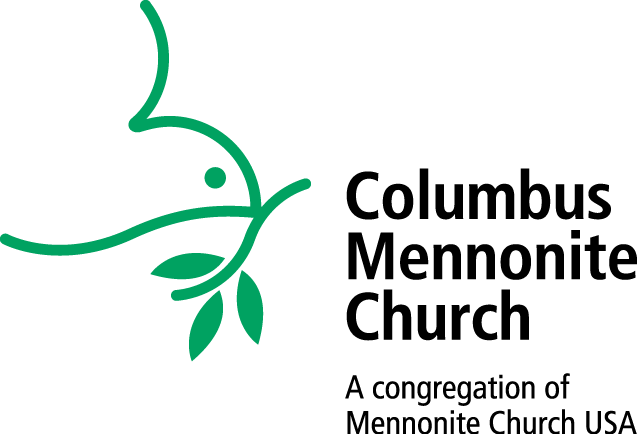Text: Luke 13:1-9, 31-35
Speaker: Joel Miller
Luke 13:6-9 – Then Jesus told this parable: “A man had a fig tree planted in his vineyard; and he came looking for fruit on it and found none. 7 So he said to the gardener, ‘See here! For three years I have come looking for fruit on this fig tree, and still I find none. Cut it down! Why should it be wasting the soil?’ 8 He replied, ‘Sir, let it alone for one more year, until I dig around it and put manure on it. 9 If it bears fruit next year, well and good; but if not, you can cut it down.'”
Question: In the parable of the not-yet-productive fig tree, which of the two characters, the owner, or the gardener, best represents your image of God? Which character, including the tree, do you most identify with?
Now it is a little dangerous to be assigning parts to every character in a parable. Parables aren’t straight allegories, with each fictional person and item having direct correspondence to something in the real world. It’s not an equation. The point isn’t to figure out who is who in a parable, and therefore solve the parable.
As we’re recognizing throughout Lent, the word parable comes from the Greek, the language of the New Testament, and it means to “throw alongside.” Parables thrive on the unexpected. We see the world in a certain way, and then a parable gets thrown alongside us, and we’re challenged to reconsider. Jesus was rather fond of doing this.
Like he does in Luke chapter 13 with the fig tree.
What’s important to know about this chapter, and about Luke more generally, is that the air around it is thick with apocalyptic expectations. A good portion of the Bible is written either with this sense of impending doom – the Assyrians, the Babylonians, the Greeks, or Romans, are coming, and they’re coming for us. Or, written in the aftermath of these conquests – stories from exile, from occupation. At times things seemed to be so dire, so beyond incremental reform, that the only reasonable hope was to await full-scale divine intervention to put an end to evil, injustice, and oppression, and usher in a new era of peaceful abundance.
As you may be aware, apocalyptic anxiety is not just a bygone era of the ancient world.
A couple years ago, I saw a cartoon that shows a man on a sidewalk holding up a sign. He’s got the stereotypical robe and long beard of a street prophet. His sign, also stereotypical at this point, reads, “The end is near.” But he has a terrified expression on his face, because he’s glancing over at the man next to him, who looks even more ragged. His sign reads “This will never end.”
You know times are hard when the only thought more troubling than the apocalypse is that there won’t be one.
In Luke, Jesus is very much tuned in to apocalyptic expectations. In his long walk to Jerusalem, he knows his time is short. And, he knows it’s short for Jerusalem. He grieves for his beloved city, “Jerusalem, Jerusalem, the city that kills the prophets and stones those sent to it,” even as he continues to walk toward it. He compares himself to a mother hen, longing to gather her chicks under her wing. A bold move after just calling Herod a fox. Jesus is a hen in the foxhouse, and he feels the fox closing in.
Jesus is on his way to Jerusalem, and he’s being followed by a large crowd. He has just pointed out how good most people are interpreting the weather for the day. He says: “When you see a cloud rising in the west, you immediately say, ‘It is going to rain’; and so it happens. And when you see the south wind blowing, you say, ‘There will be scorching heat’: and it happens” (Luke 12:54-55). But, Jesus says “why do you not know how to interpret the present time?”
Interpreting the present time. We’re still not very good at that. We look to commentators, listen to podcasts, read up on articles to help us out. What is going on? How did we get here? Where are we going? Is the end near? The end of what? What clouds are rising and what winds are blowing? Sometimes the commentary can be incredibly insightful, sometimes less so.
Given Jesus’ remarks, and given the presence of the eager crowds, it makes sense they would ask him to interpret their present time. This is where Luke chapter 13 picks up, our reading for today. The Roman governor Pilate had just murdered several Galileans on pilgrimage in Jerusalem, and made a show of it by mixing their blood with the sacrifices. A tower on the outskirts of Jerusalem, the tower of Siloam, had fallen and killed 18 people. These were current events of the day, the evening news, All Things Considered, headlines of interest to the people. The present time. What is going on? What does this mean Jesus? Is the world coming apart at the seams? Are these signs of God’s judgement on these people?
No, Jesus says about the victims, “do not think that they were worse offenders than all the others living in Jerusalem.” Roman governors can be cruel, sometimes they kill people. Towers can be designed or built poorly, or deteriorate over time. Sometimes they fall. Don’t put any of that on God. To make a common phrase slightly more fit for church, “crap happens.” That’s essentially Jesus’ two word social commentary for these events. Crap happens. He does use the occasion to say unless people repent, unless they transform their minds, they’ll be no better off than these victims.
For this, he has a parable.
If God wasn’t behind the killing of those Galileans, and if God didn’t aim that falling tower at the 18 folks in Jerusalem, then what is God up to? And what might we be up to in these apocalyptic times?
The parable is about a landowner and his gardener, and a fig tree in a vineyard that is not producing fruit. It hasn’t grown any fruit, in fact, in its three years of existence. The landowner wants the gardner to cut it down. The gardener lobbies for more time. She commits to digging around the tree, loosening up the soil, and adding manure to increase nutrients.
The gardener believes in the possibility of this tree’s transformation.
A similar story, with a different ending, shows up in a collection from ancient Babylon about the wise man Ahikar. This would be about 500 years before Christ. It goes like this: “And I, (Ahikar), spoke to Nathan thus: Son, you have been to me like a palm-tree which has grown with roots on the bank of the river. When the fruit ripened, it fell into the river. The lord of the tree came to cut it down, and the tree said: Leave me in this place, that in the next year I may bear fruit. The lord of the tree said: Up to this day you have been useless to me, in the future you will not become useful.” (Ahikar 8.25, Armenian, in RH Charles, Apocrypha and Pseudepigrapha of the Old Testament.)
Even if Jesus’ listeners hadn’t heard this story, they knew their Hebrew Bible.
The prophet Isaiah had recorded a famous poem about an the unfruitful vineyard. In the analogy, God was the landowner who planted the vineyard, and Judah was the vineyard that produced sour grapes through its injustice and bloodshed. So God vows to destroy the vineyard.
Other prophets carry the metaphor along. Jeremiah says “When I wanted to gather them, says the Lord, there are no grapes on the vine, nor figs on the fig tree” (8:13). Hosea (9:10) and Micah (7:1) make similar references.
But if they knew their Hebrew Bibles, they also would have known Leviticus 19:23-25 divine instruction for all Israelites:
“When you come into the land and plant all kinds of trees for food, then you shall regard their fruit as forbidden; three years it shall be forbidden to you, it must not be eaten. In the fourth year all their fruit shall be set apart for rejoicing in the Lord. But in the fifth year you may eat of their fruit, that their yield may be increased for you; I am the Lord your God.”
In the parable Jesus tells, the landowner is in direct violation of Torah, demanding fruit in the tree’s first three years. The Torah had taught patience, tree grace, letting the tree get established, then in the fourth year, whatever it would produce would be for ritual celebration with the Creator. Only after that would the tree be enlisted in the production economy.
With the default God-figure in Jesus’ parable now suspect, the impatient and demanding landlord, attention shifts to this gardener. This unnamed, unknown caretaker who has been with the tree all along. The gardener, with her hands and knees covered with dirt, asks the owner to give the tree time, another year at least, that year of celebration, while she digs around it, and puts manure in the soil. That last part literally translates as “throw manure.” I guess sometimes thrown alongside means some manure gets thrown in there too. But no worries. The gardener knows what to do with crap.
If the first part of Luke 13 could be summarized as “crap happens,” the parable of the fig tree that directly follows could be summarized as Crap + Time = Fertilizer. That does violate the earlier mention that parables can’t be reduced to equations, but maybe just this once. God the patient gardener knows what to do with crap. The question is, do we? Crap + Time = Fertilizer.
And the question is, living in these apocalyptic times, do we have time to be patient? What would we do if we really do have another year, and beyond, to keep working the soil of our lives? What destructive ways of thinking and acting could be transformed from a toxic stew into rich fertilizer for the beloved community? Could this even be the year of celebration of all that is good and delicious, food for the body and soul?
What if the gardener had her way?

